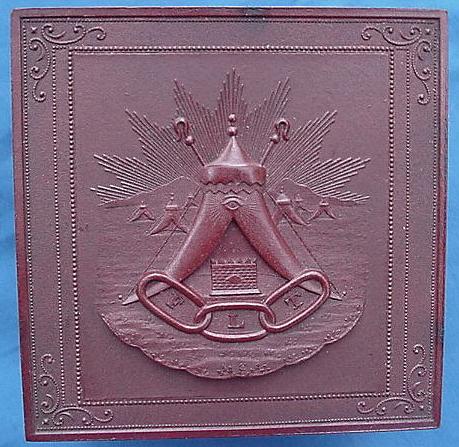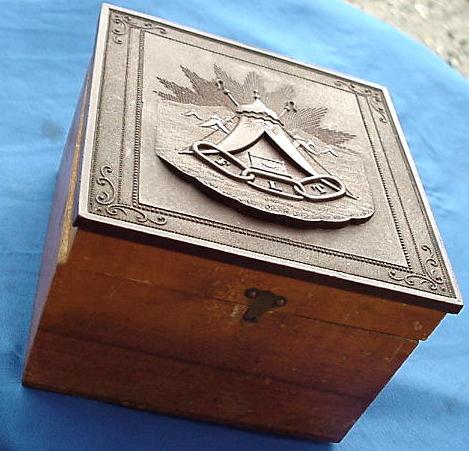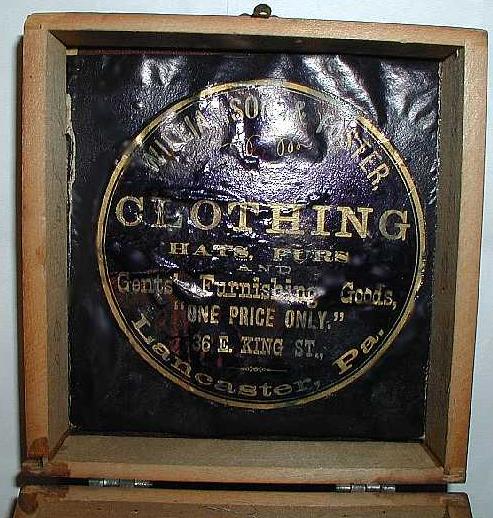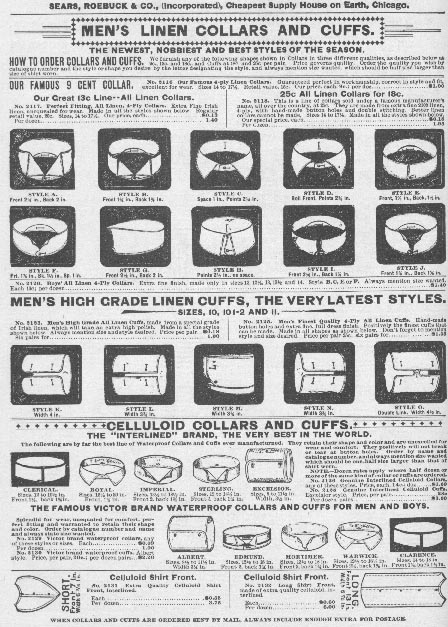Early
Odd Fellow Collar Box



This
is one great old Collar Box that has all the proper labels. The lid is of a
Odd Fellow motif depicting the tent and encampment, a symbol of their uniform
order. The lid is made from Gutta Percha material (Early plastic) most
commonly used for civil war photo union cases. Gutta
Percha is a rubber-like material that comes from the dried sap of sapodilla
trees of East Asia. It was the major product used for golf ball
manufacture from around 1848 well into the 1900’s. The term is erroneously
used for caoutchouc bookbinding as gutta percha was tried and found to be
unsuitable. The tops were not made from wood per se, but from a
combination of wood fiber and shellac mixed
together to form a material that its inventor called "Union" - thus
the name.
The
man responsible for this material was Samuel Peck. He was one of the owners of
the Scoville Company, which also made cases for photographs from leather and papier-mâché
as well. )
The box is about 4 ½ inches
high and 5 by 5-inches square and was for storing a size 11 ½ collar, size
stamp on the front. The inside still contains the original purple black store
label, very few retain this label. The label is from the Williams & Foster
store and reads "Dealers in Clothing, Hats, furs and Gent’s
Furnishing Goods with 'one price only' 36 E. King Street Lancaster, PA."
There is also a New York Tax stamp on the bottom of the box.
Men's
Collars in History
Men's collars are not the first
thing most think of when one thinks of men's historical fashion. Never the
less they were quite important in there day. They were used to help preserve
shirts. Since men usually wore under shirts the places of most contact between
skin and shirt was at the collar and the cuffs. By making a removable
collar and cuff that could be washed separately you didn't have to wash the
shirt as often.
They came into being around the
1860's when clothing was expensive and hand made for the most part. Once
the factories started making clothing in mass production, making clothing less
expensive and more available the separate collar and cuff didn't save any time
or resources any more. They ended in the 30's.

Sears Catalog Page from 1897

